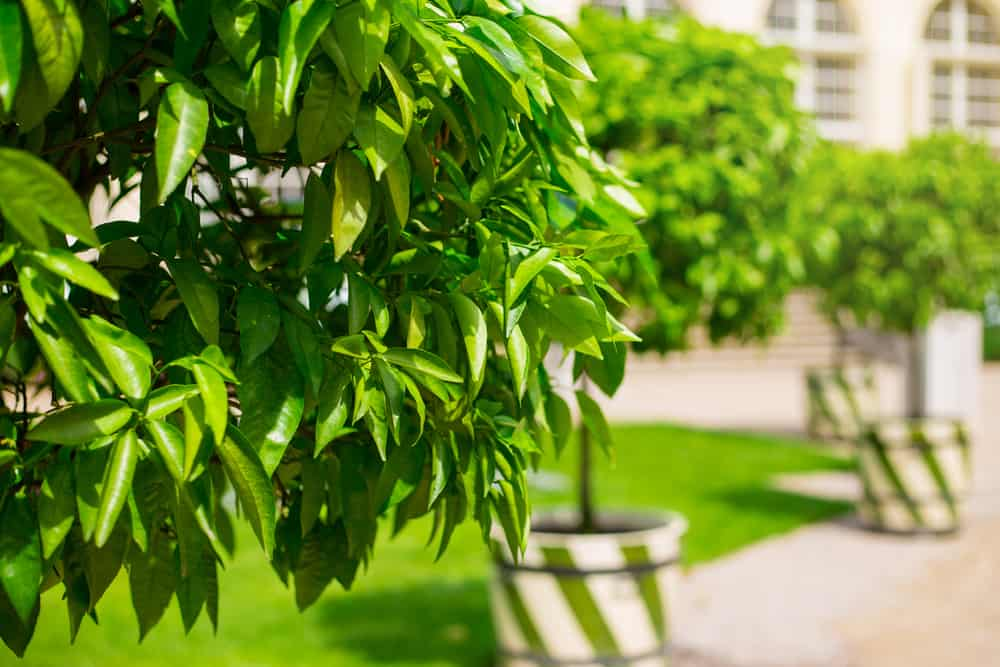Tree Maintenance in May
Time spent in your yard now will help ensure verdant growth in the summer months ahead. We continue with the spring clean up begun in April – see our diary for that month here. We outline several simple but key tasks in your garden for the month of May. As ever, timings may differ depending on your state and elevation etc as per the health warning at the end of these tree care suggestions.
Prune Flowering Trees in May
Prune trees that flower in spring after their blooms have ended. This will encourage flowering in subsequent seasons.
Early flowering trees that should be treated this way include forsythia, magnolia, dogwood, lilac and wisteria.
Those that flower in the summer such as crape myrtle should only be pruned in the winter months.
Prepare for a Bright Green Summer
The mulching plan we advocated in our Tree Care Diary for March should already be paying dividends by retaining moisture in the soil and reducing weeds. A major benefit will be to reduce the amount of watering your trees need when the weather gets hotter. Take the opportunity to check that the layer of mulch is maintained at around 3 inches deep. Also ensure that mulching material is kept away from the bottom of the tree trunk at grade. The tree’s root flare should always be open to the air. The root flare is where the bottom of the tree trunk flares out to the tree roots.
Check your tree mulch regularly to ensure that moisture-loving diseases such as canker do not take hold. And for that new tree which you planted as part of Arbor Day at the end of April, create a new mulching as advised in our March diary.
Alternative To Mulching
If you have chosen not to mulch, then you will need to:
1. Devise an alternative fertilization and irrigation plan for your tree – an expert can help here; and
2. Avoid using herbicides anywhere near the roots of your tree when trying to remove the weeds that would have been suppressed with a mulch; and
3. Avoid damage to trees when mowing your lawn.
Prepare for Stormy Weather
If you’re concerned about damage to your trees from the upcoming storms in Florida, there are means to reduce the damage from all but a direct hit. Firstly, your trees can be trimmed to reduce their wind resistance. Ideally, this should have been done in the winter but it’s still possible to do now with help from a professional. Secondly, your vulnerable trees can be braced or cabled. Again this must be completed by a trained and certified tree care expert.
Pesticide Control
Depending on the pest inspection you conducted in April (see our Tree Care Diary for April on Pest Inspection), it may be beneficial to apply a tree spray for the specific fungal or insect infestation that you or a qualified professional has identified. The timing of your spraying is crucial so as to avoid killing pollinating insects such as bees.
Generally, bees are active during the day, so the early evening will be the best time to spray at this time of year. And instead of automatically reaching for your spray gun consider natural pesticide remedies too. There are plenty of organic alternatives that are less harmful to your garden environment and all who live within it. We’re happy to tell you about them.
Florida Fruit Tree Care in May
The tree experts at the IFAS Extension of the University of Florida recommend the following:
- Young Chestnut Trees (in 1st year of growth) – Apply two cups of 10.10.10 fertilizer per chestnut tree
- Young Peach Trees/ Plum Trees and Nectarines (in 1st year of growth) – Spread half a cup of 12.4.8 fertilizer over the root zone of each young tree.
- Slightly Older Peach Trees/ Plum Trees and Nectarines (in 2nd year of growth) – Fertilize each fruit tree of this age in May with two or three cups of 12.4.8 fertilizer.
- Young Citrus Trees – If you have recently planted a citrus tree of any type then irrigation is vital at this time of year. The Citrus Research and Education Center of University of Florida’s Institute of Food and Agricultural Sciences recommend that your citrus tree must be watered two times a week between April and June. Use only a small volume of water for your small citrus trees (no more than one or two gallons per tree). During the rainy season, water the tree as needed. Keep an eye on them as wilting will damage root growth and tree development. And resist over-watering either.

More detailed information on citrus tree care from IFAS for Florida gardeners here: https://edis.ifas.ufl.edu/publication/PP336
Consider calling a tree care professional to:
- Help with your recognition of tree disease and insects damaging your trees
- Guide you or carry out a pesticide spraying program
- Run your spring fertilization program
- Prune your spring flowering trees.
Call Tree Top Pros for any tree care issue you may have.
Kindly Note: The accuracy of this calendar and timings shared within it cannot be guaranteed. States in the USA are at different latitudes, longitudes and have varying elevations. This makes the general advice we give hard to fit all states the same. Compounding these differences are the type of tree species that vary between states. Furthermore, each state has its own weather patterns and levels of rainfall. All this calendar can do is broadly summarize best practice care for your trees. We therefore suggest that you consult your local arborist for more specific insights and advice relevant for your particular location.

